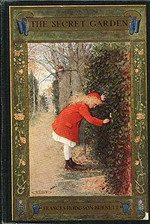Prose
A Gardener Boards the Plane
By Anna M. Warrock
Attention ladies and gentlemen. We are now ready to board the flight to Eden.
Will our first-class passengers, those who have successfully grown citrus and jasmine plants without scale or white fly, please board first.
Those with young children or whose hands and knees and shoes have as much dirt as those young children are privileged to board next.
Our business class passengers, those who have a garden plan and follow it, please board now, and would you be so kind as to help other passengers with their baggage.
Discoveries in the Insect World
By Anna M. Warrock
Nature can be wonderfully specific. Yes, monarchs love milkweed—there’s a toxin in the plant that makes the brightly striped caterpillars distasteful to predators, and somehow the monarchs figured this out. But it’s not just monarchs that are linked to specific plants.
The grapevine beetle (Pelidnota punctate) came back on the river grape that frames my front porch. Also called the spotted June bug, this beetle simply appeared when I first planted the vine (five years ago). I don’t know of other river grape vines except maybe a half-mile away; mine was a pass-along plant. The beetle, soft tan with dark spots on the edge of its elytra (the hard shell “wings” protecting the real wings) eats holes in the leaves but does not do much damage and is not considered a major pest. Among plentiful leaves, it happily occupies its small link in the ecosystem.
Late Clean-up for a Native Pollinator Garden
By Anna M. Warrock
They have been cozy all winter, those eggs, caterpillars, pupae, and chrysalises—the pollinators-to-be. Some parents hid caterpillar eggs in the leaves, others burrowed into stalks to lay eggs. Some insects made it to chrysalis stage and await warmer temperatures—and a coincident bloom of flowers—to emerge. The insects awaken given particular levels of moisture, light, temperature, and their internal clocks.
Which is why attentive gardeners do not clean up their native pollinator (NP) garden right away. Many of the plants are caterpillar food on which parents deposit eggs and overwintering caterpillars often hunker down nearby.
Overwintering: The Living Room Diaries 2017
By Anna M. Warrock
I think climate change has come to my living room.
My Ming aralia (Polyscias fruticosa), which I tout as a hardy, carefree houseplant that in 30 years never had a bug on it, in December was covered in aphids. Why now? Is increased heat coming from the south-facing window where my plants hang out during winter? (Internet research reveals that aralias are prone to bugs, but maybe that rap is topsy-turvy “truthyness”—this was a 30-year clean record!)
The Celtic Seasons in a Somerville Garden
By Anna M. Warrock
For the past several years I’ve marked the seasons the way European pagans did, pagan here meaning one who lives on the land (the original meaning of paganus in Rome was something akin to farmer, as opposed to one who is urban). The solstices and the equinoxes name the extent of the sun’s journey across our grid of understanding, the imaginary lines in the sky or on the globe. But everyone knows that winter begins before the Winter Solstice and that summer is hottest after the sun turns south again at the Summer Solstice. The seasons marked by cross-quarter days define those stretches better.
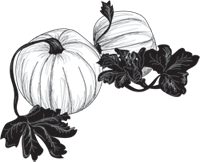
Plants Out of Balance
By Anna M. Warrock
Alas! A favorite plant—I thought it a hard native, wild but with a homely beauty, fragrant, white single roses on a panicle, hips to feed the birds—is invasive! A gardening friend told me, “The agricultural extension services pushed that plant in the 1930s as a ‘living fence’ because it’s so hardy. But now it’s crowding out other plants.”

Plant of the Month: Narcissus
By Anna M. Warrock
When I was a student in England, a young man once smiled at me and ate a yellow daffodil. Although the practice isn’t to be encouraged—the bulb contains a toxic alkaloid—I will forever see in his expression the glow of the daffodil inside him.Narcissus (we’ll get to names in a moment) have a long heritage as tokens of spring, apothecary plants, trade items, subjects for hybridization, and stalwarts of spring gardens. This adaptable mountain plant was cultivated in early medieval times and has naturalized throughout Europe; Virginia has naturalized varieties from English colonists’ gardens. A dry bulb travels well. The narcissus spread from its Mediterranean home through the Middle East to the Himalayas, China, and Japan, following the Silk Road and suggesting a universal delight in its spring joy.
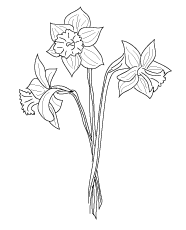
The Night Garden
By Anna M. Warrock
Sometimes at night I go down the back stairs and into the garden. I am drawn outside by the smell and sound of what is alive in the dark. Voices may echo over the houses and a car may rumble up the street, but the night garden holds a dreamlike intensity.
Buckets and Tubs
By Anna M. Warrock
While rooting round in the basement in January, rearranging pots, staring at seed-starting trays, trying to pretend this activity resembled gardening, something unexpected became clear. I have more plastic tubs, buckets, and bags than watering cans. For someone covetous of just the right watering can and appreciative of the many forms they take, to discover upwards of 12 tubs was, well, slightly embarrassing. I had no idea—I covet tubs?
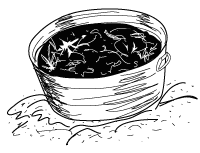
P.M. Gardening
By Anna M. Warrock
It is suddenly November. Two boxes on the back stairs hold 160 bulbs for my garden (tulips, hyacinths, daffodils, species tulips, squill, crocus), to be planted in between my full-time job, family, and the laundry. The change in daylight hours has snuck up on me, but I do not panic. It is the season for P.M. Gardening.
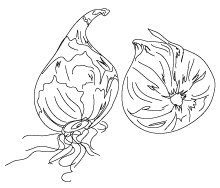
Review:
The Secret Garden, Frances Hodgson Burnett
By Anna M. Warrock
There comes a moment in every childhood when we become certain the family we live with is not really our family. These strange people do not understand us. We belong elsewhere, we decide with a sad, determined fierceness. Thus begins the process of making a home within ourselves.
